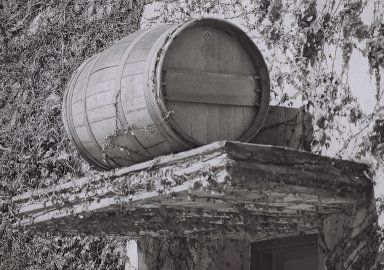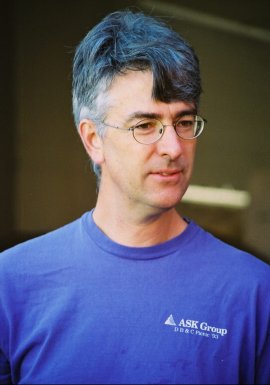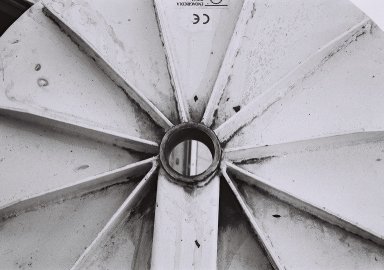Ladd Cellars
My friend Eric started a small winery, Ladd Cellars, in 2005. He's focussing on Pinot Noir and will also have some Syrah. By small, I mean that his first year's production will be around 175-200 cases of the Pinot, with another 25 or so of the Syrah, if I'm counting correctly (or remembering correctly what he's told me). I helped with both crushing and pressing the Pinot, and took quite a few photos at the first crush and first press. The photos below are all from the press because I'd already had the crush photos developed and printed before realizing it would make sense to get him a set of photos on CD.
The physical winery is in Berkeley, at 805 Camelia St., off Gilman near REI. Ladd Cellars is the smallest of the wineries using the space; the others are Harrington Wines and Eno Wines. If you want to get on Eric's mailing list, you can get there from the Ladd home page, or click here for a direct link.
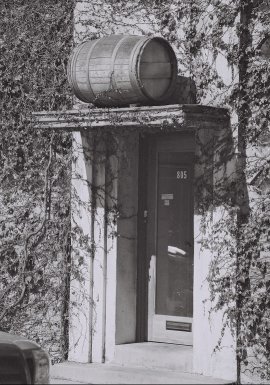 The barrel is
a dead giveaway as to what the building is used for.
The barrel is
a dead giveaway as to what the building is used for.
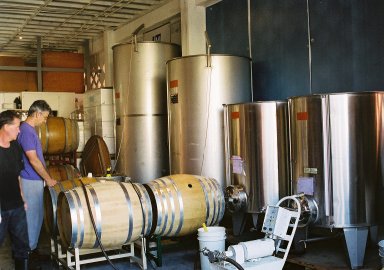 Interior of the winery in
one configuration; those big tanks CAN be moved around and sometimes are.
The barrel were in place temporarily for the press. That white thing in
front of the tanks is the pump.
Interior of the winery in
one configuration; those big tanks CAN be moved around and sometimes are.
The barrel were in place temporarily for the press. That white thing in
front of the tanks is the pump.
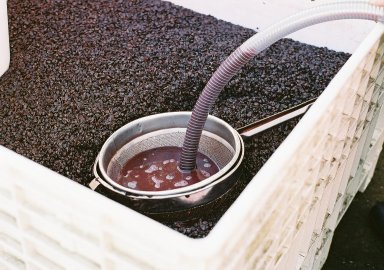 When a plastic
fermentation bin is opened up, what you see is a lot of purple: the grapes
and the baby wine. The funnel lets you strain out the wine; the hose runs
to the pump. The wine that doesn't need to be pressed from the grapes is
call free run.
When a plastic
fermentation bin is opened up, what you see is a lot of purple: the grapes
and the baby wine. The funnel lets you strain out the wine; the hose runs
to the pump. The wine that doesn't need to be pressed from the grapes is
call free run.
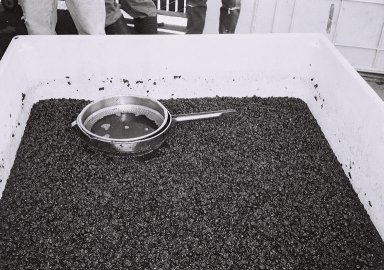 A less
colorful shot of a bin and the funnel.
A less
colorful shot of a bin and the funnel.
 The pump. A hose runs from
the fermentation bin or the wine press to the pump; another hose runs from
the pump to the barrel.
The pump. A hose runs from
the fermentation bin or the wine press to the pump; another hose runs from
the pump to the barrel.
 The press,
with Alan and young Brian.
The press,
with Alan and young Brian.
 Interior of
the press with some grapes added. Enough grapes will go in to fill the
press all the way up. The bladder in the middle is filled up with water,
pressing the grapes against the walls of the press to gently extract wine
that doesn't flow freely from the grapes.
Interior of
the press with some grapes added. Enough grapes will go in to fill the
press all the way up. The bladder in the middle is filled up with water,
pressing the grapes against the walls of the press to gently extract wine
that doesn't flow freely from the grapes.
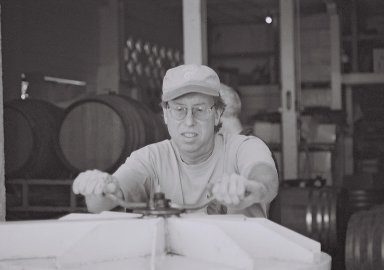 Ken, the pressmaster, battens down the
hatches,
tightening the press lid before pressing. (His day job? Architect, and
he's darned good, too.)
Ken, the pressmaster, battens down the
hatches,
tightening the press lid before pressing. (His day job? Architect, and
he's darned good, too.)
 Wine
coming out of the press. This might be free run (before the hydraulic
press starts) or it might be pressed wine.
Wine
coming out of the press. This might be free run (before the hydraulic
press starts) or it might be pressed wine.
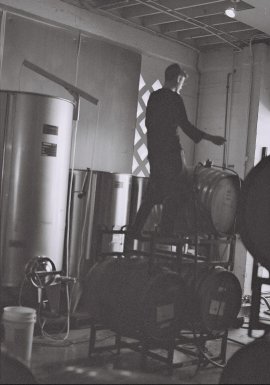 Young Brian balances on the barrel rack.
Young Brian balances on the barrel rack.
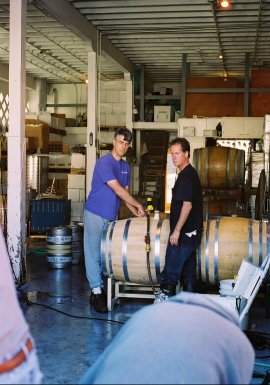 Eric and Bryan looking
very, very serious as the wine is pumped into a barrel.
Eric and Bryan looking
very, very serious as the wine is pumped into a barrel.
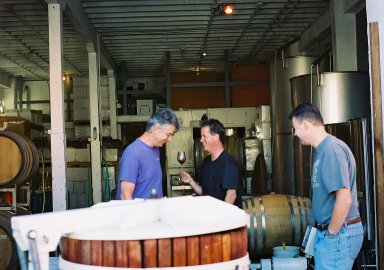 Sometimes they do
smile, though. Apparently the wine was satisfactory.
Sometimes they do
smile, though. Apparently the wine was satisfactory.
 The press
after it's done its job. The hollow in the middle is the space left
when the water is released from the bladder. A straight-down overhead shot
would be very cool, but I think even Eric, at 6' 6", would not be able to
position and focus a camera for the photo. It might take Eric and a
ladder.
The press
after it's done its job. The hollow in the middle is the space left
when the water is released from the bladder. A straight-down overhead shot
would be very cool, but I think even Eric, at 6' 6", would not be able to
position and focus a camera for the photo. It might take Eric and a
ladder.
 The press comes apart in two pieces so
that the pressed grapes can be removed comparatively easily. Here, the
halves have been unlatched and one half of the press has been moved and
emptied. You can see just how big that hydraulic bladder is, too.
The press comes apart in two pieces so
that the pressed grapes can be removed comparatively easily. Here, the
halves have been unlatched and one half of the press has been moved and
emptied. You can see just how big that hydraulic bladder is, too.
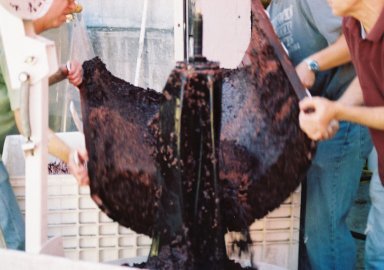 The
other half of the press being lifted away.
The
other half of the press being lifted away.
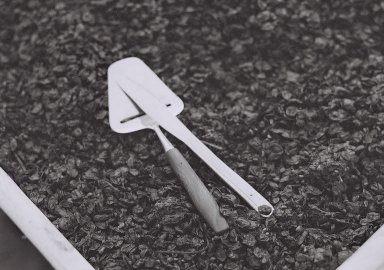 Well, yes,
we did eat some cheese that day, but I have no idea how these utensils
got into the remains of the grapes. (Maybe we didn't eat any cheese
that day. Eric says the utensils were used for cleaning out the
press.)
Well, yes,
we did eat some cheese that day, but I have no idea how these utensils
got into the remains of the grapes. (Maybe we didn't eat any cheese
that day. Eric says the utensils were used for cleaning out the
press.)
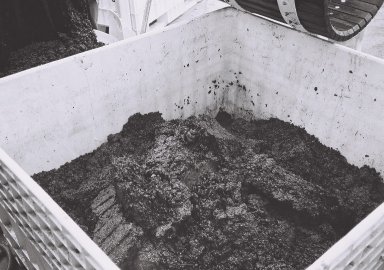 Winemaking results in a lot of compost,
including grape stems (after destemming) and pomace (after pressing).
Winemaking results in a lot of compost,
including grape stems (after destemming) and pomace (after pressing).
All photos on this page copyright Lisa Hirsch, 2005. If you're interested in using them anywhere else, you have to get my permission and Eric's. Email me and I will check with him.
